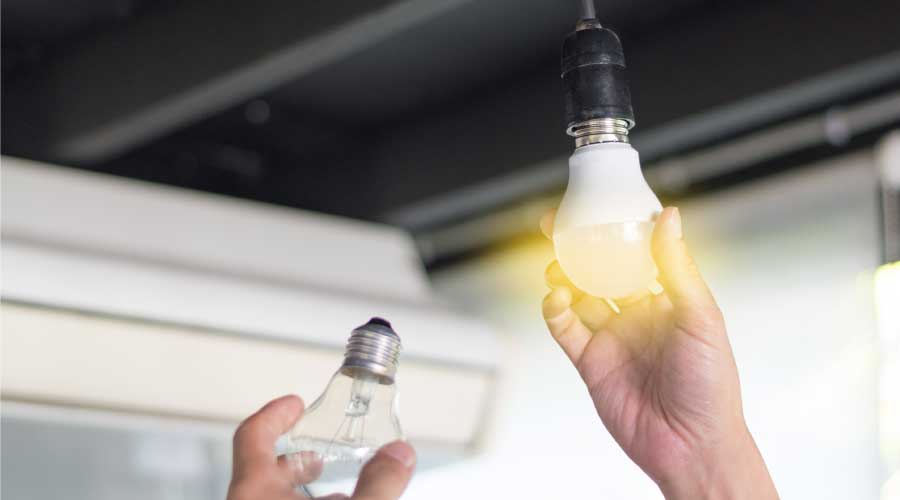Lighting Controls: Personal Switching, Dimming
Studies have demonstrated people respond differently to their environments when it comes to lighting and temperature. For lighting, responses vary with the lighting conditions. But conventional lighting systems do not address these variable needs, being one-size-fits-all systems designed to satisfy most but not all occupants.
Personal control lets users set light levels to their personal preference and, as a result, gain more control over lighting conditions. Personal-control strategies include switching and dimming and can involve multiple layers of lighting, such as task lighting.
Switching strategies include bi-level or multi-level switching. Dimming strategies include bi-level and continuous dimming of lighting layers down to the granular level of individual fixture control, where users control their lighting using a personal-computer interface, desktop control, or handheld remote.
Personal control has been the subject of intense research, which has shown an increase in productivity among office workers who use it while generating 10 percent or greater energy savings. Managers can specify both dimming and bi-level or multi-level switching to comply with the bi-level switching requirement in energy codes based on the International Energy Conservation Code.
When specifying for control zones as small as individual fixtures, managers can consider a digital lighting system using the Digital Addressable Lighting Interface or appropriate proprietary protocol. Digital lighting networks enable facility operators to set up control zones as small as a fixture and reconfigure them without rewiring.
Combining Controls
Lighting-control strategies can work well together and in some cases even within the same light fixture. For example, the National Research Council Canada and the Institute for Research in Construction conducted a year-long study of light fixtures that integrate occupancy sensing, daylight dimming, and individual-user dimming control. The controls produced 42-47 percent energy savings.
Surveys of participating users showed a correlation between the advanced lighting system and greater satisfaction. The researchers credit the system’s success in part to the presence of a dedicated local employee who ensured the system was well maintained, particularly with respect to ensuring the information technology department re-enabled the individual dimming control for new occupants. •
Craig DiLouie is principal of ZING Communications Inc. — www.zinginc.com — and education director for the Lighting Controls Association, www.aboutlightingcontrols.org. He also is a consultant, analyst and journalist in the lighting field.
Spotlight: Lighting Controls Association
The Lighting Controls Association, administered by the National Electrical Manufacturers Association (NEMA), is an industry alliance of manufacturers of lighting controls and controllable ballasts dedicated to educating the public about lighting-control technology and application.
The association offers extensive education resources, including white papers on legislation, codes, technologies, research and trends, as well as a comprehensive online-education program called Education Express.
The association began an initiative to educate the public about lighting-controls commissioning, with plans to launch a free online course about commissioning with a generic specification, detailed procedures for popular lighting control types, and an adjustment-reporting form.
The association also is working with the Light Right Consortium and NEMA to produce an Office Lighting Satisfaction Survey Tool. Using the tool, managers can survey employees to generate a lighting inventory.
For more information, visit www.aboutlightingcontrols.org.
|
Related Topics:













